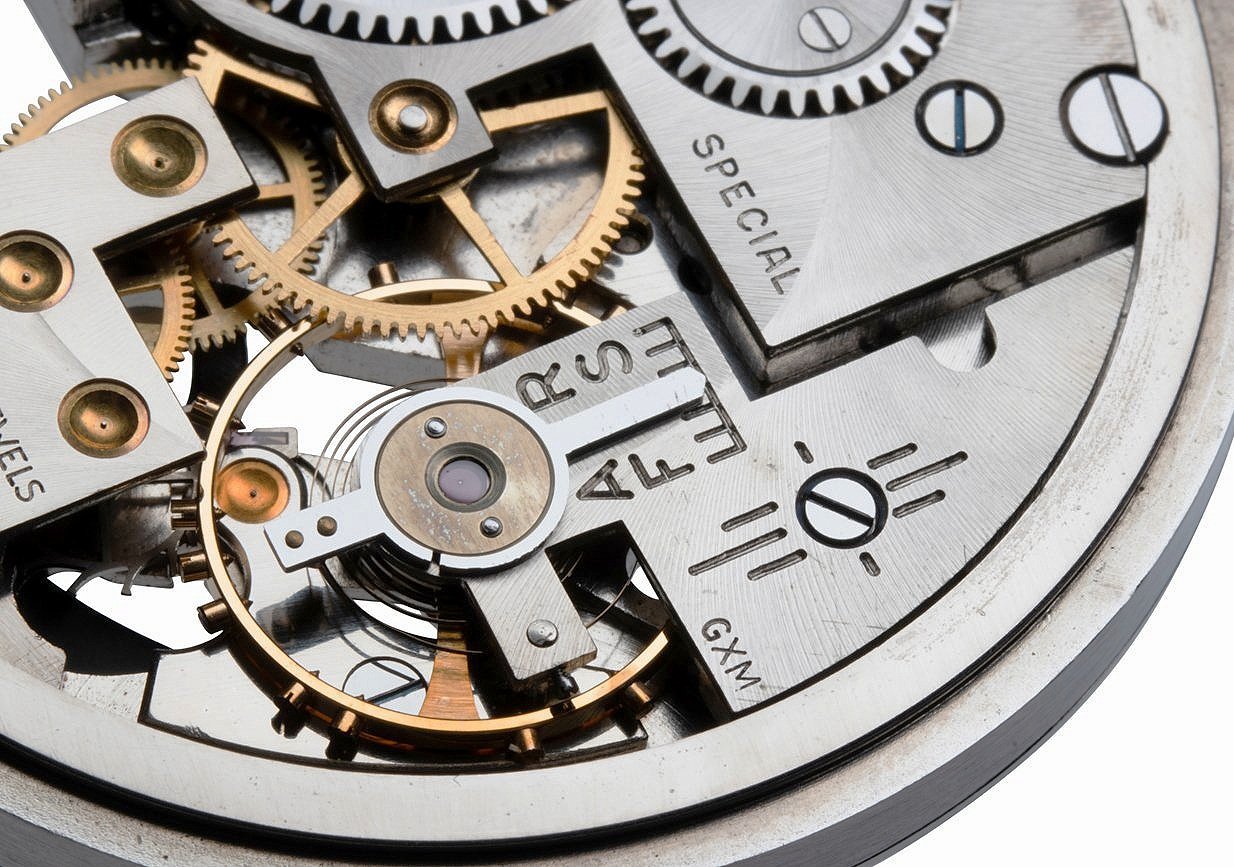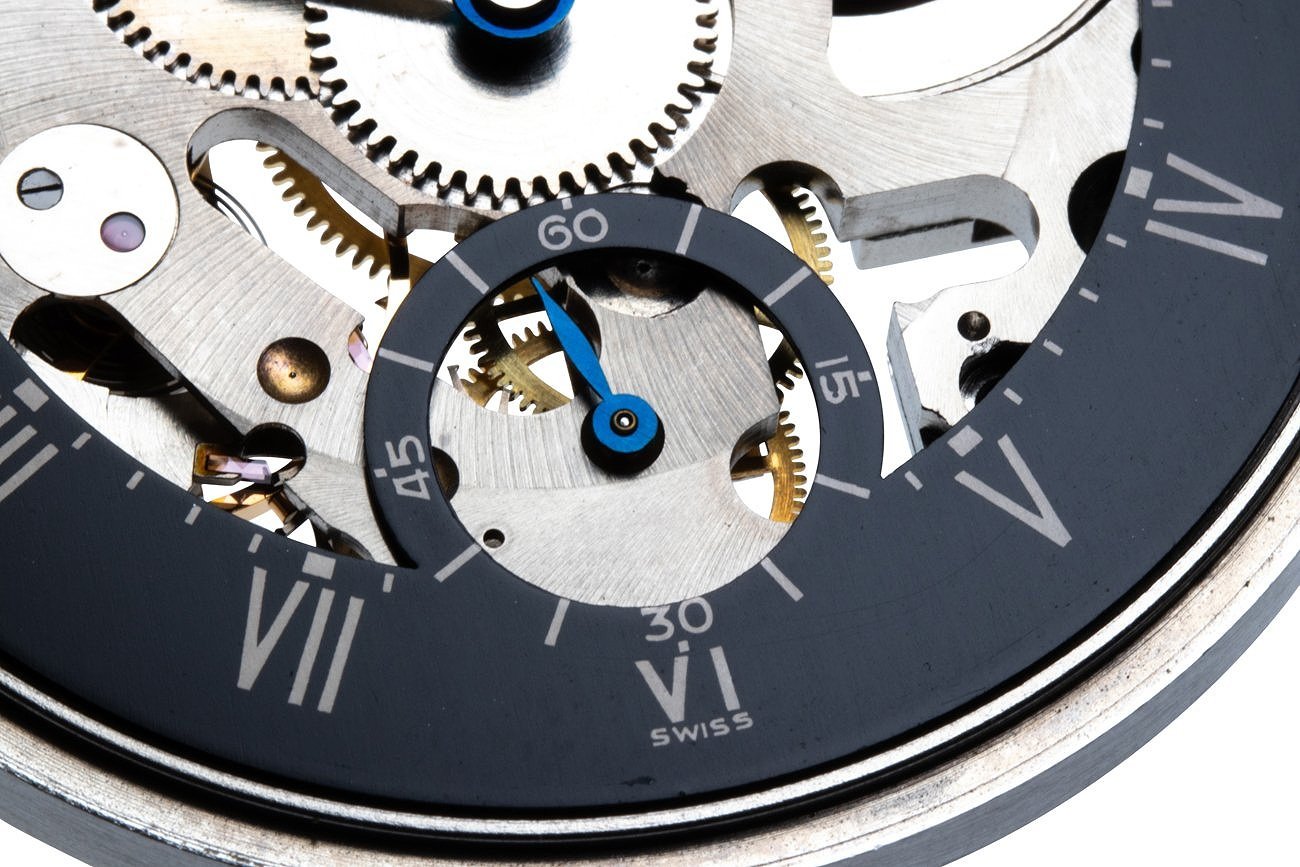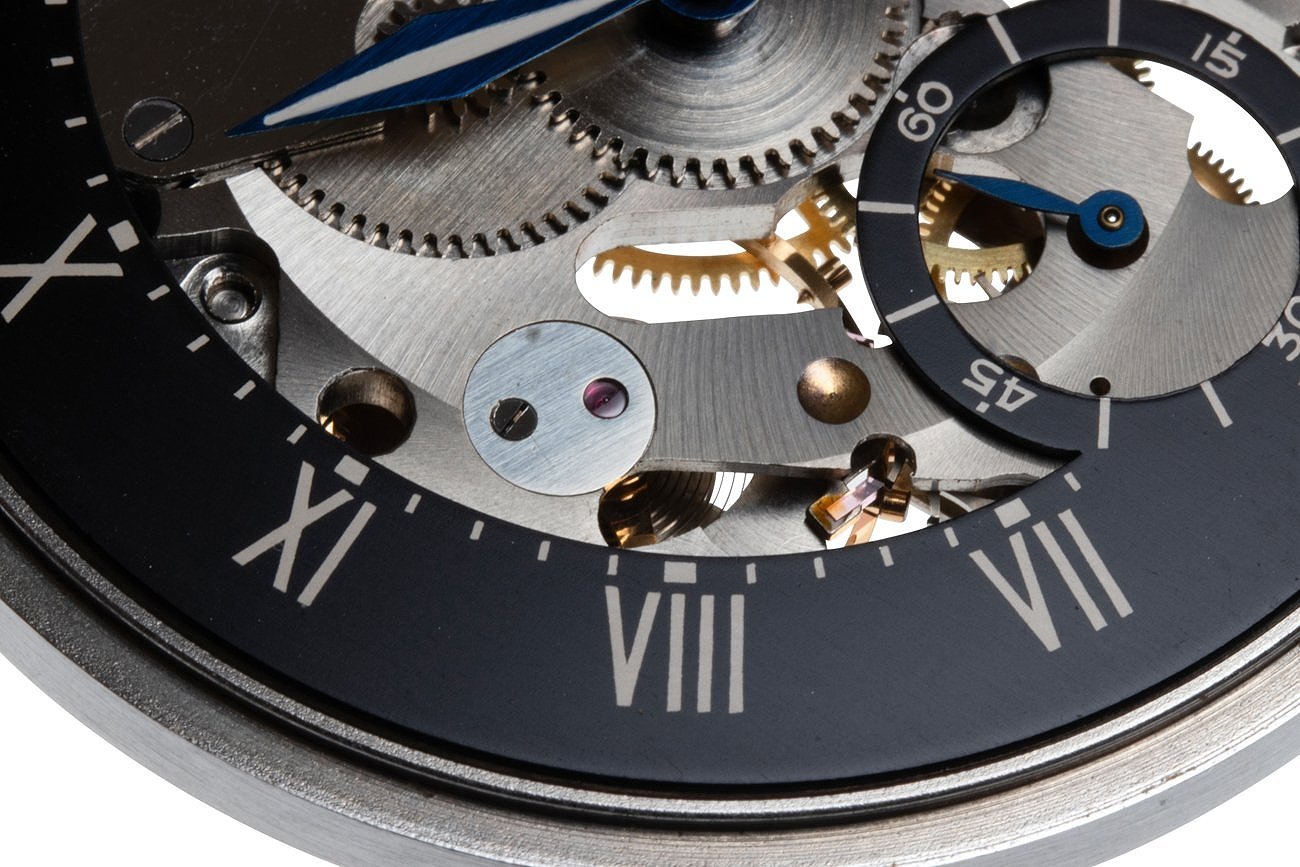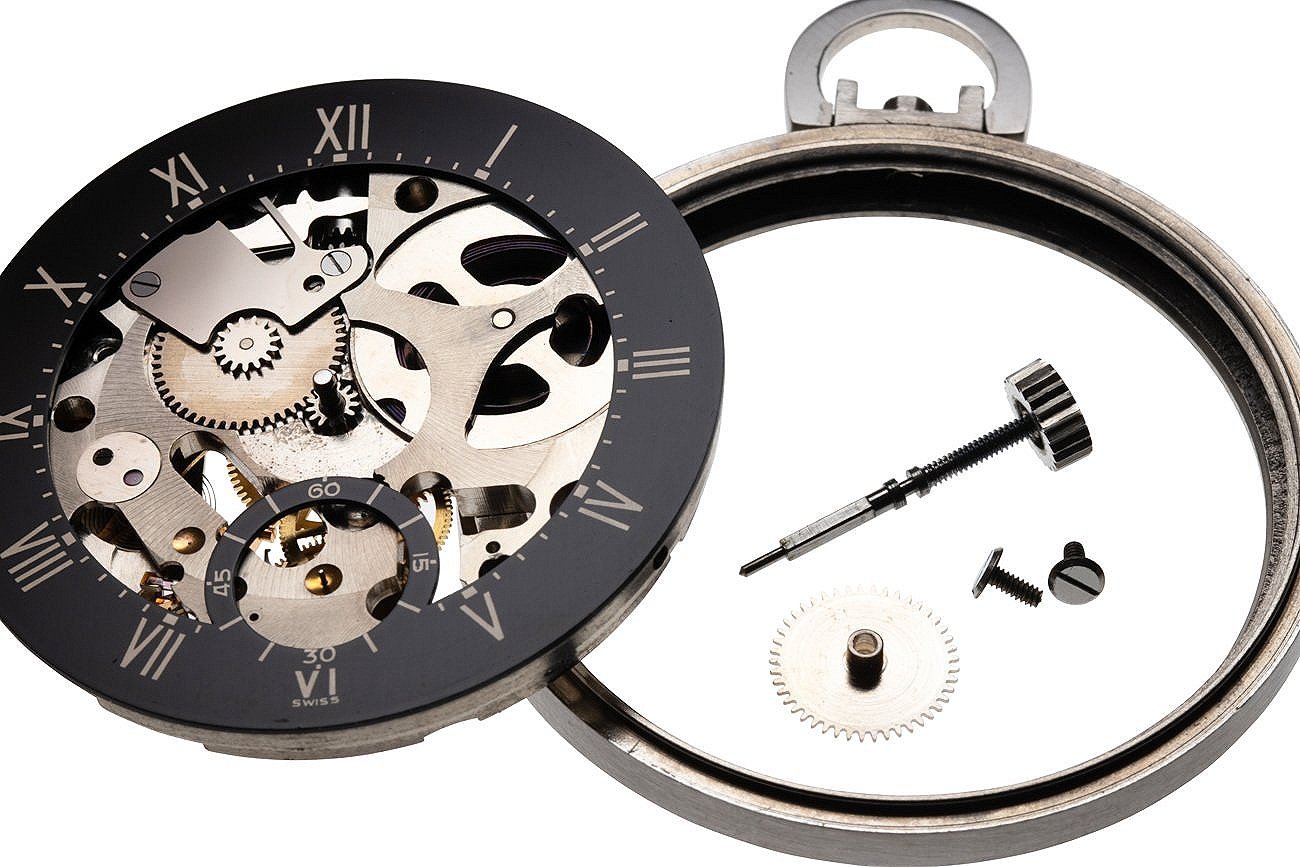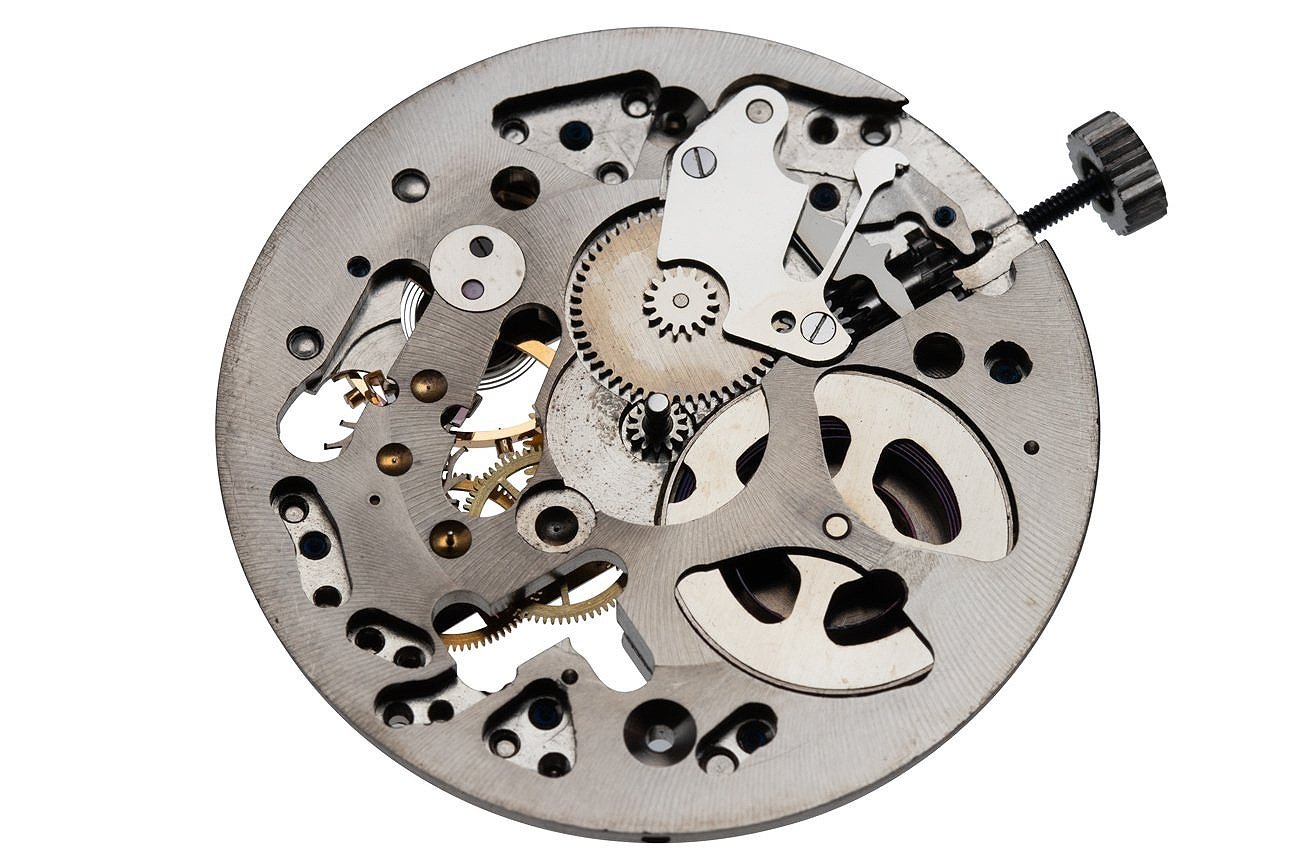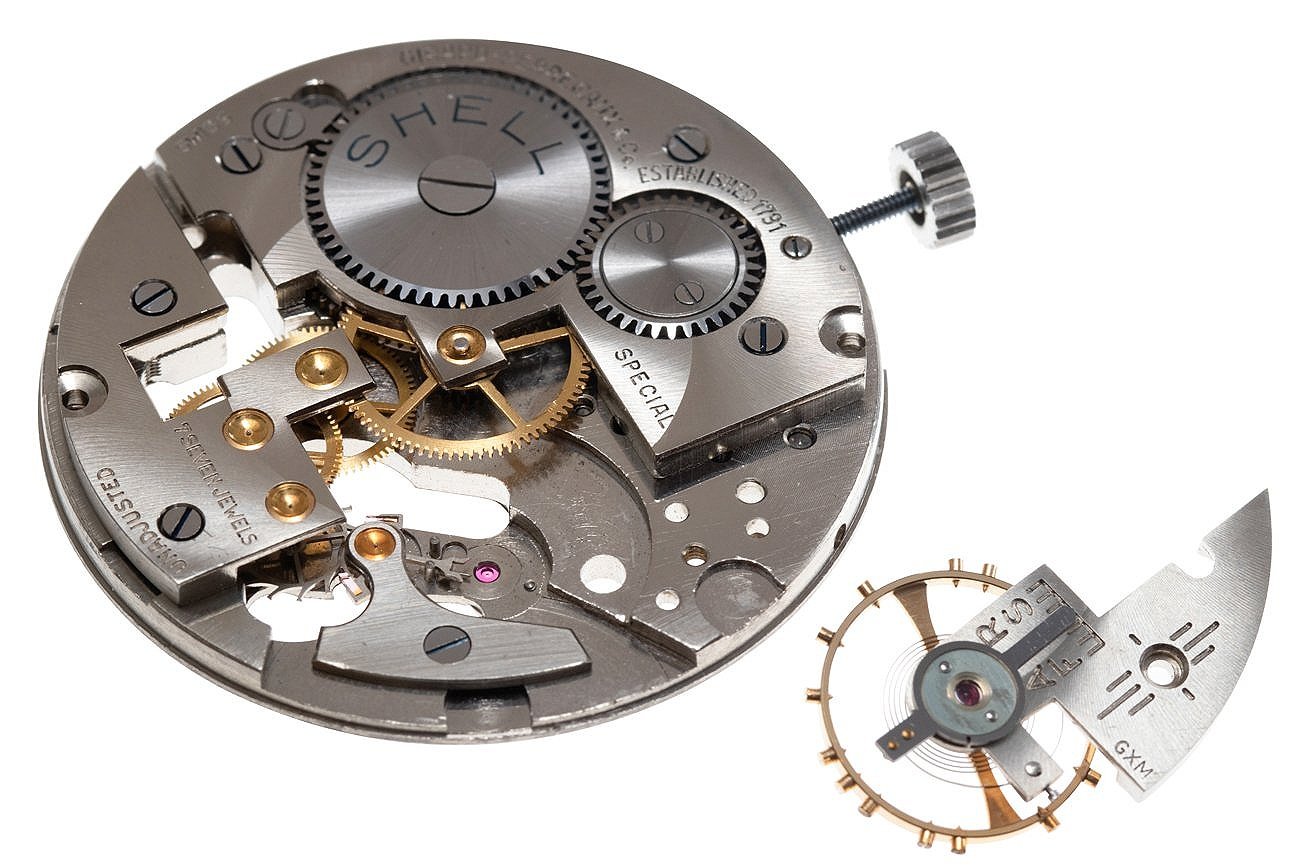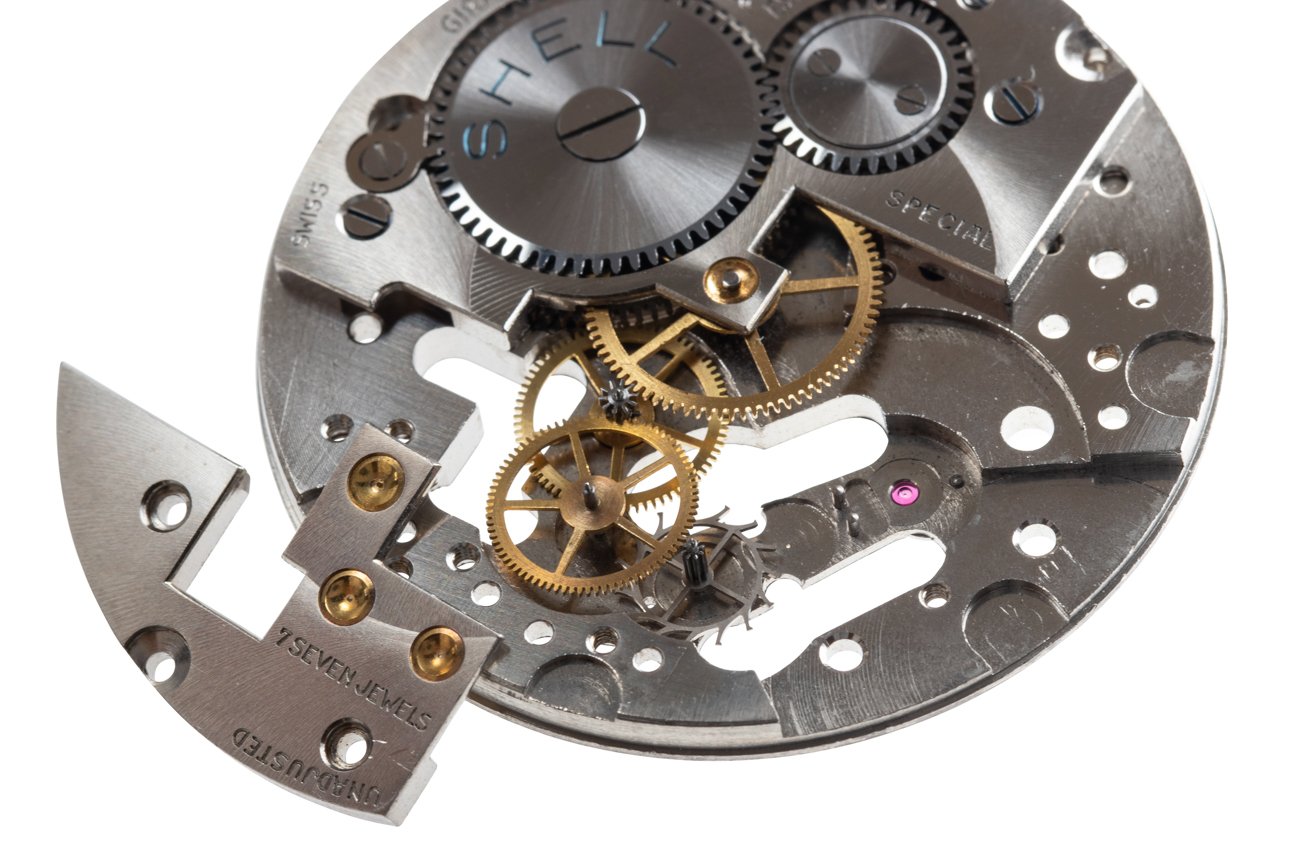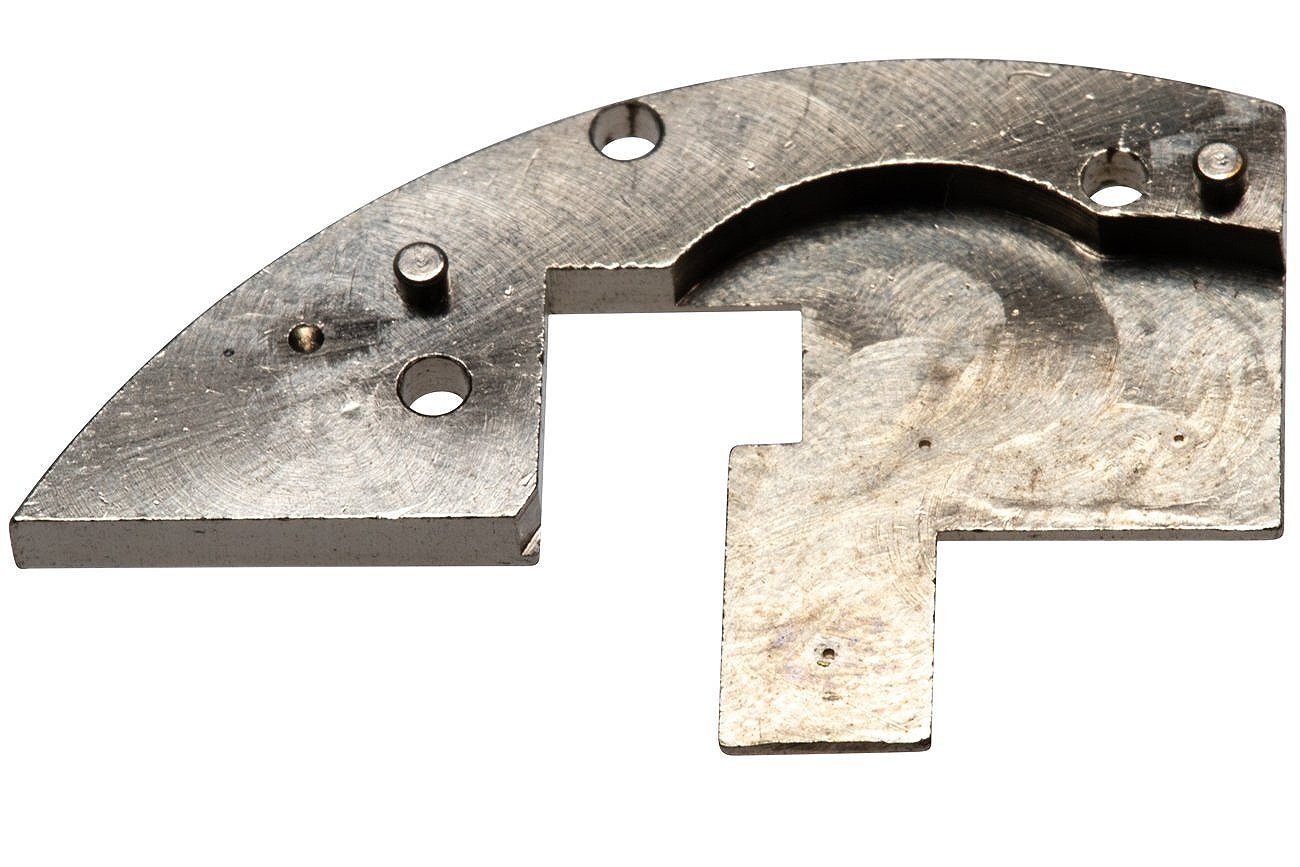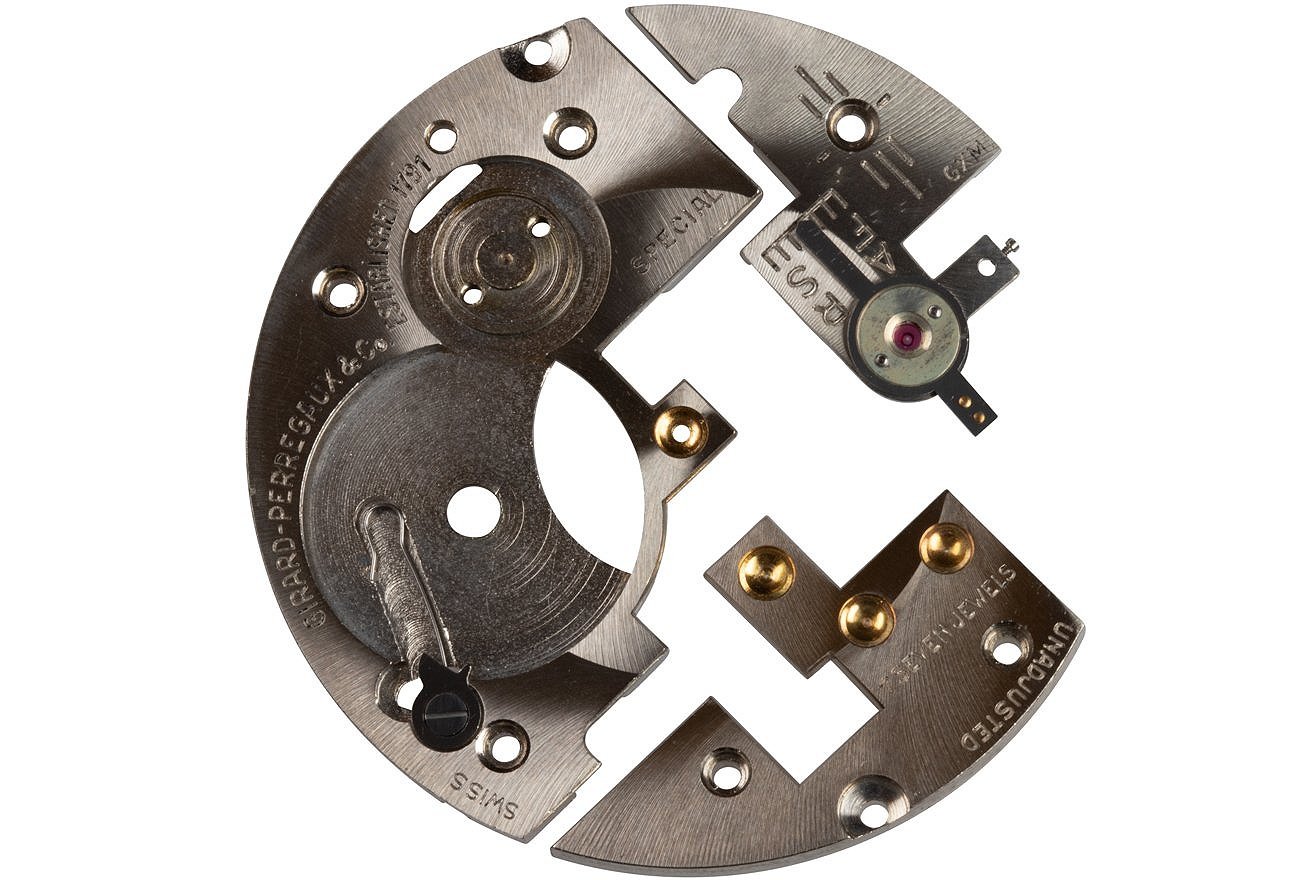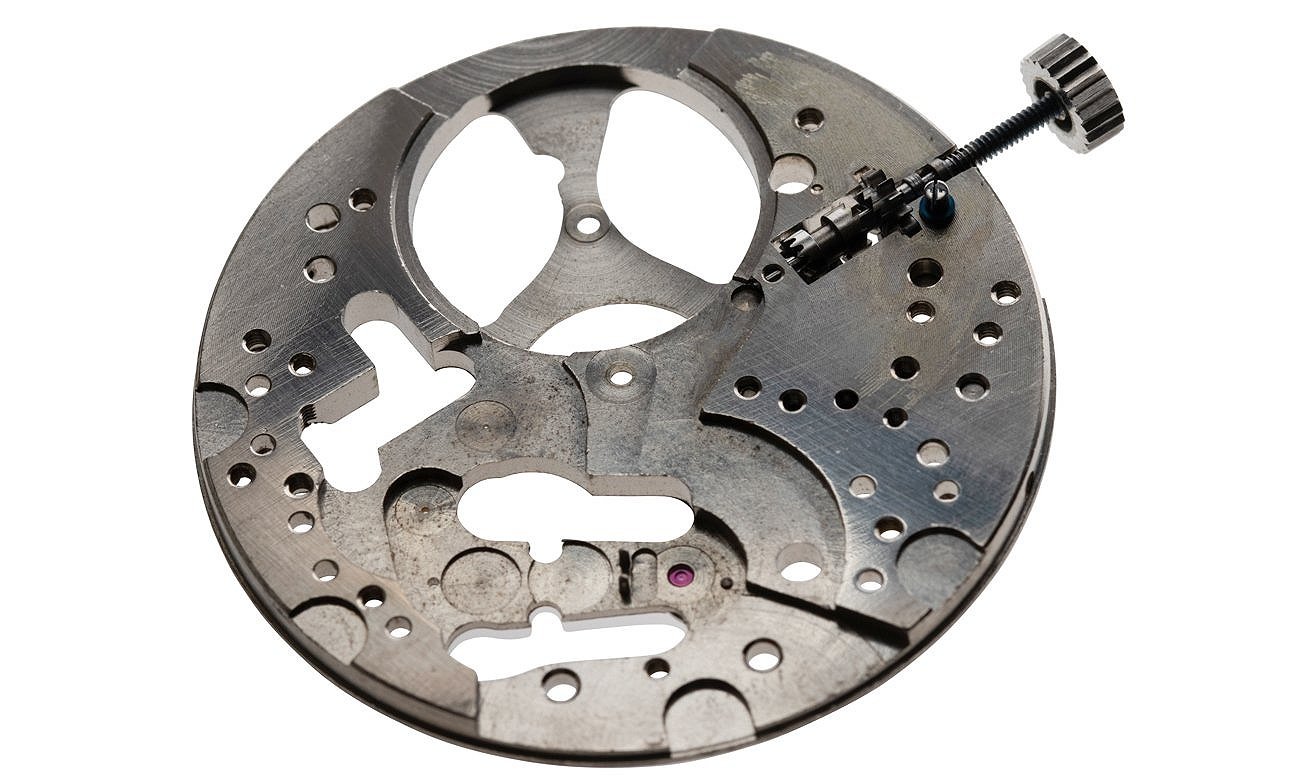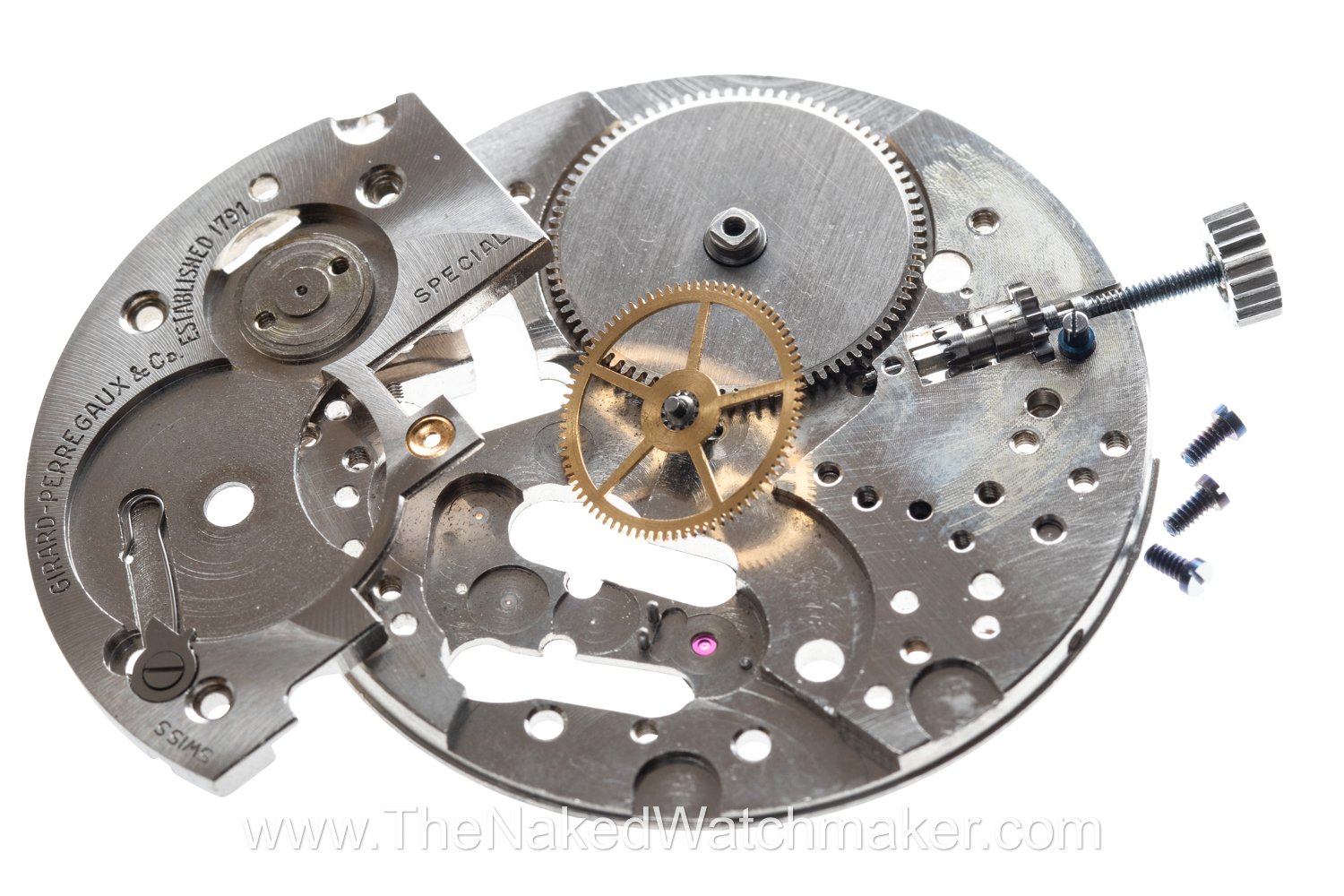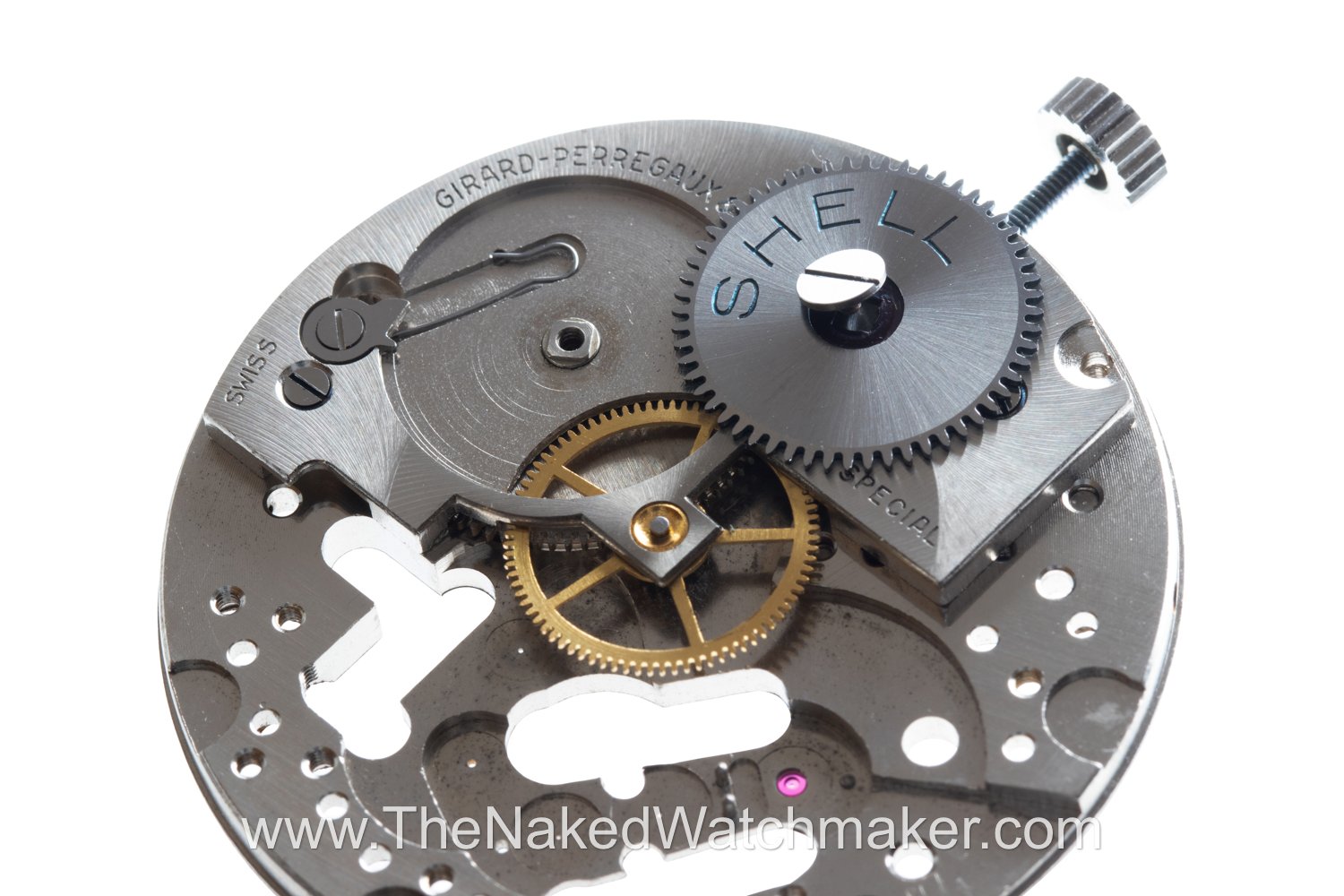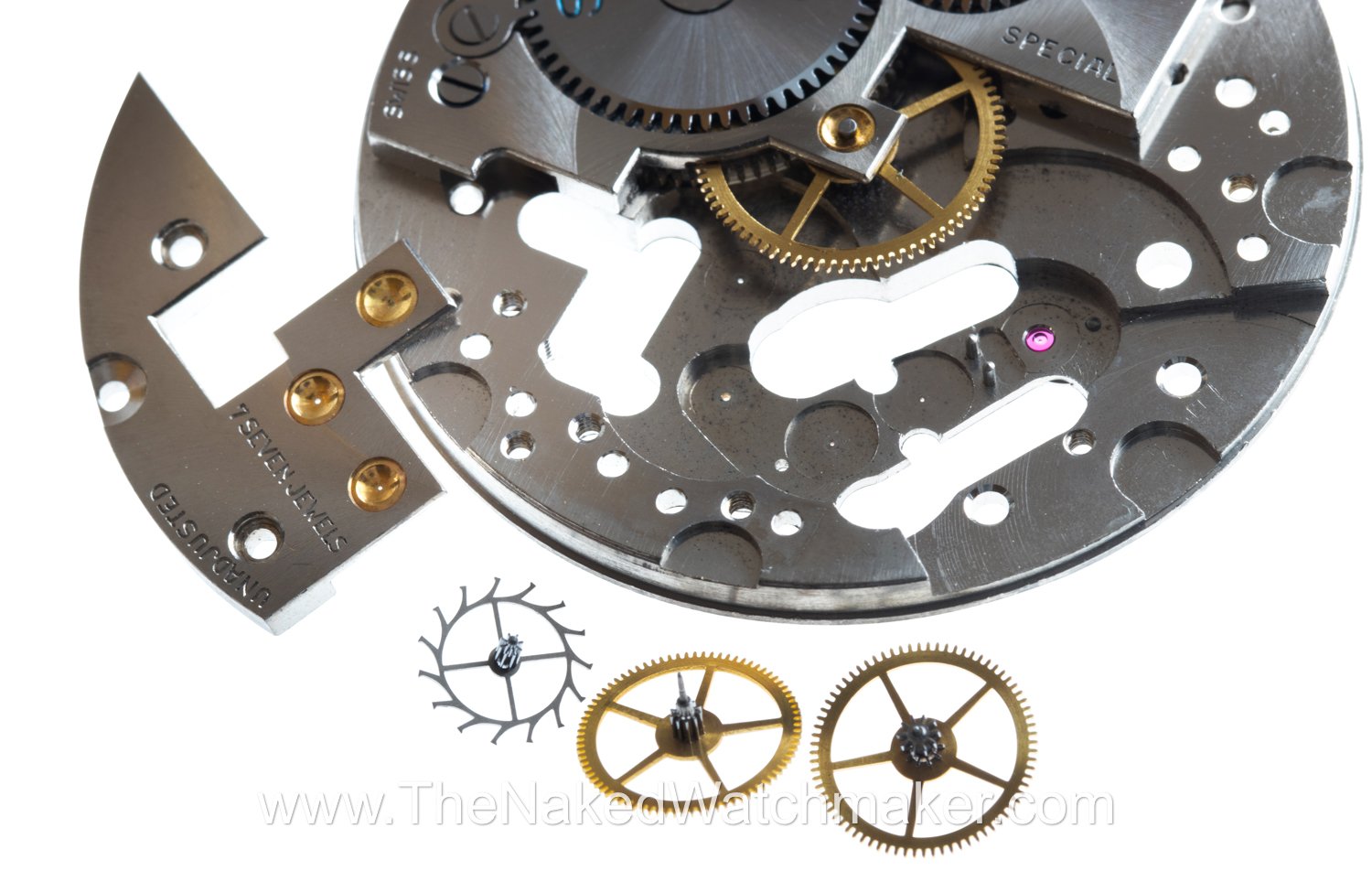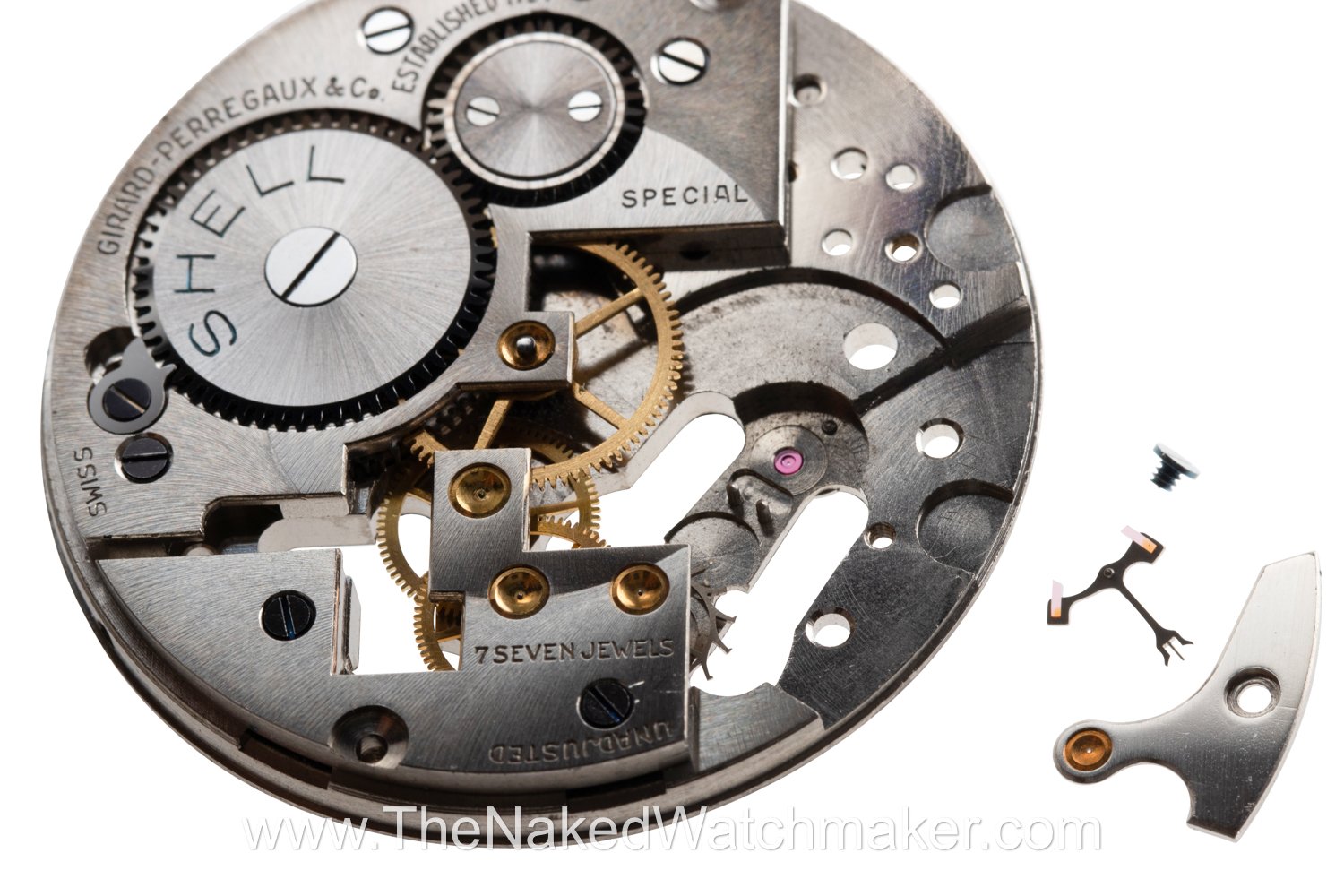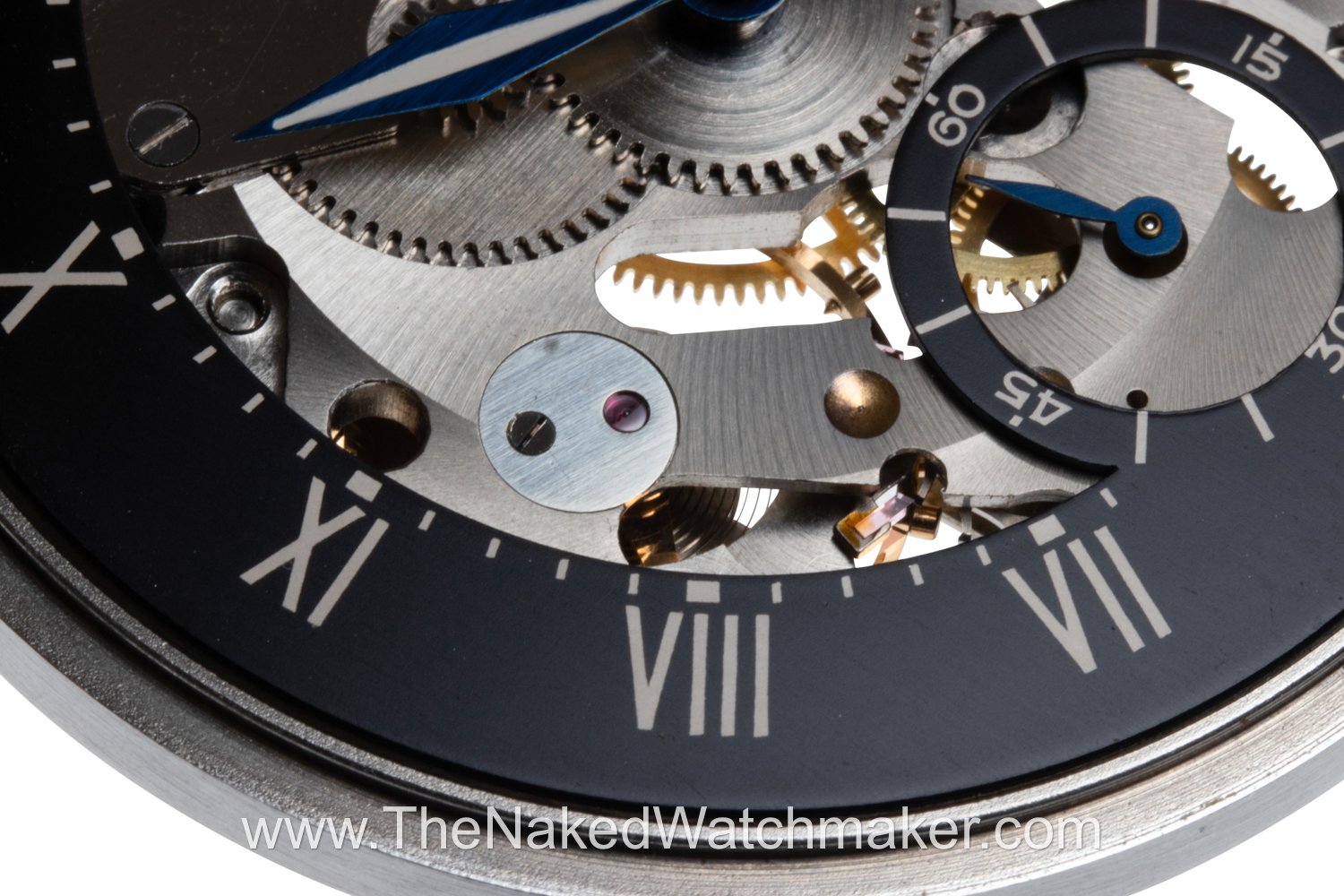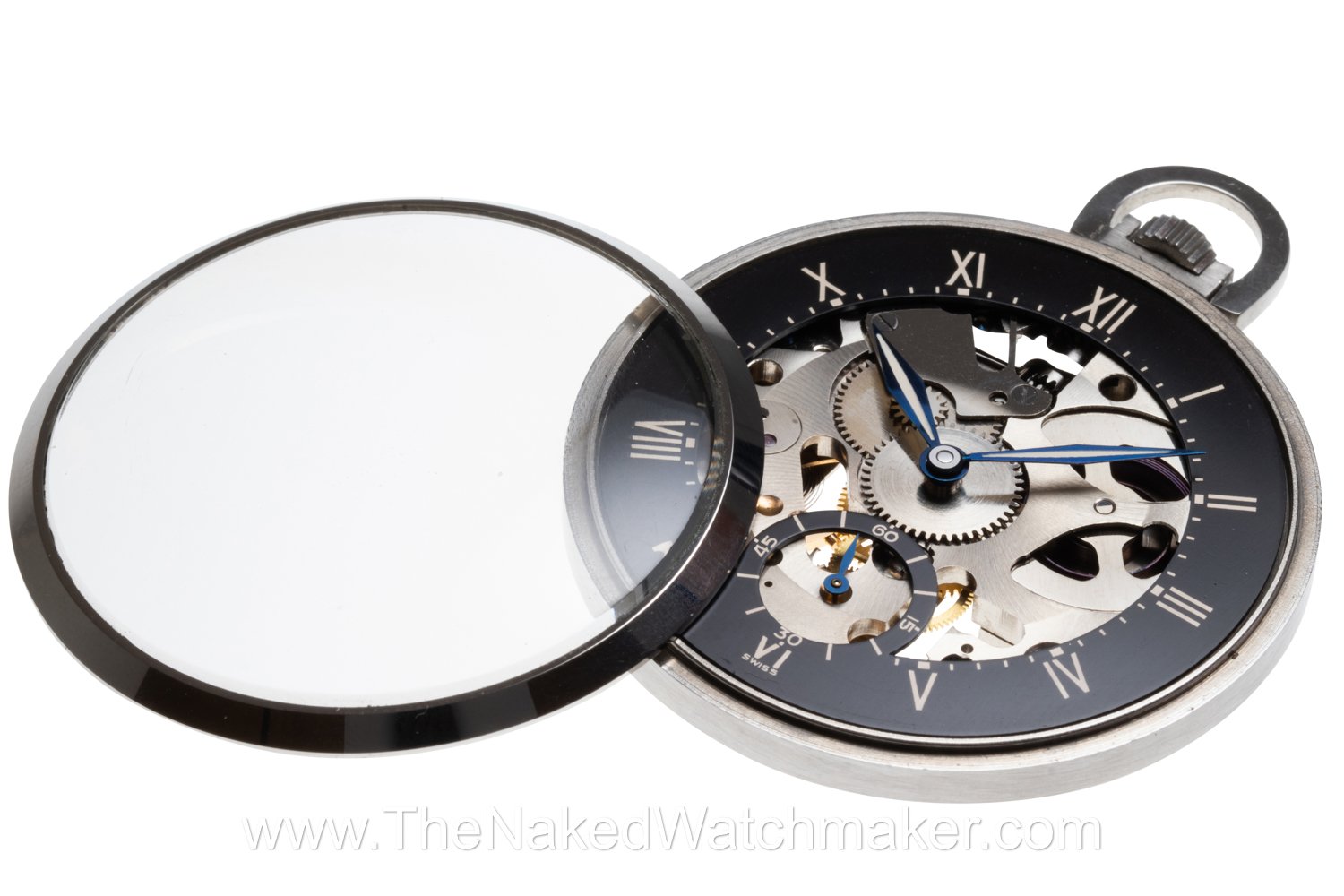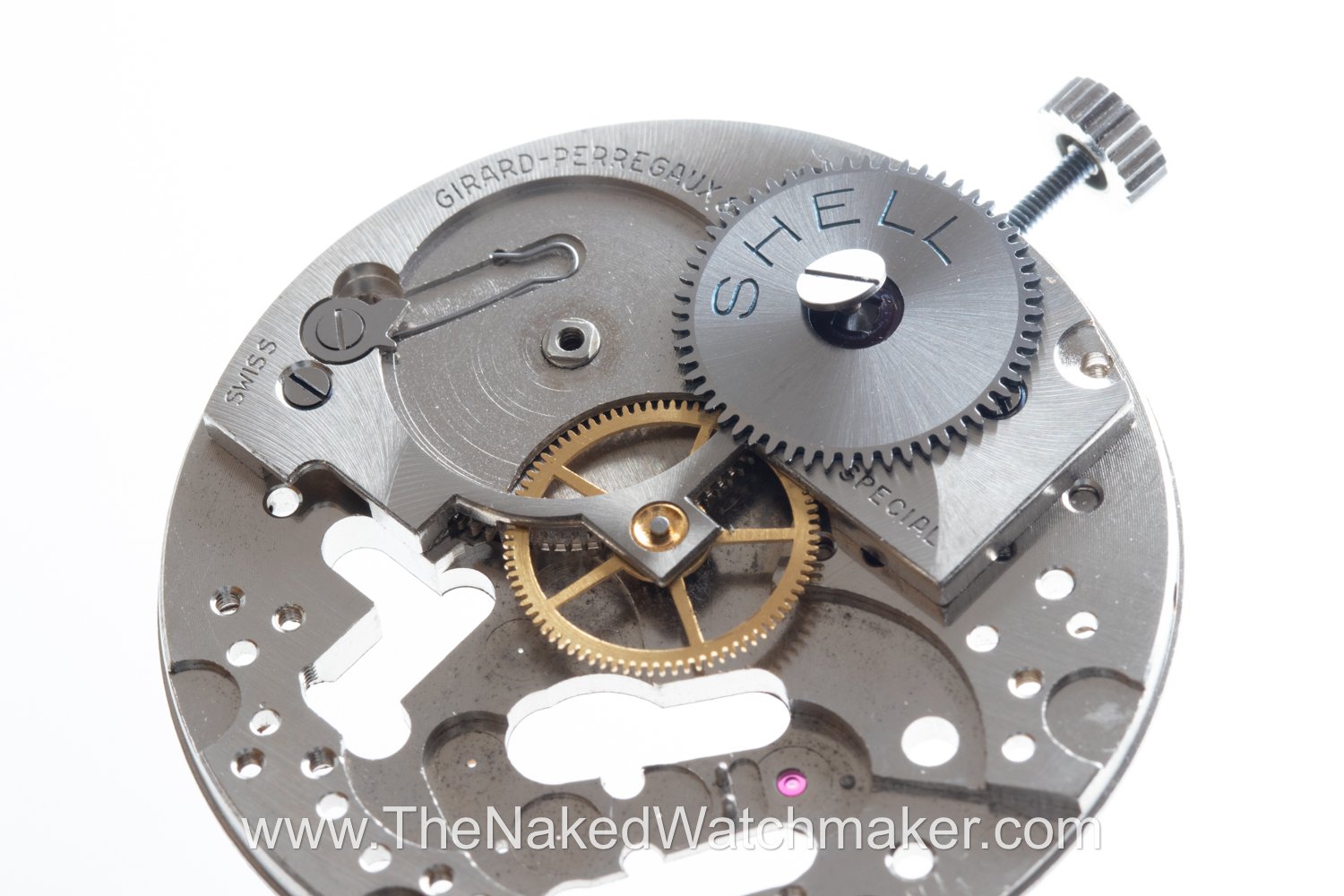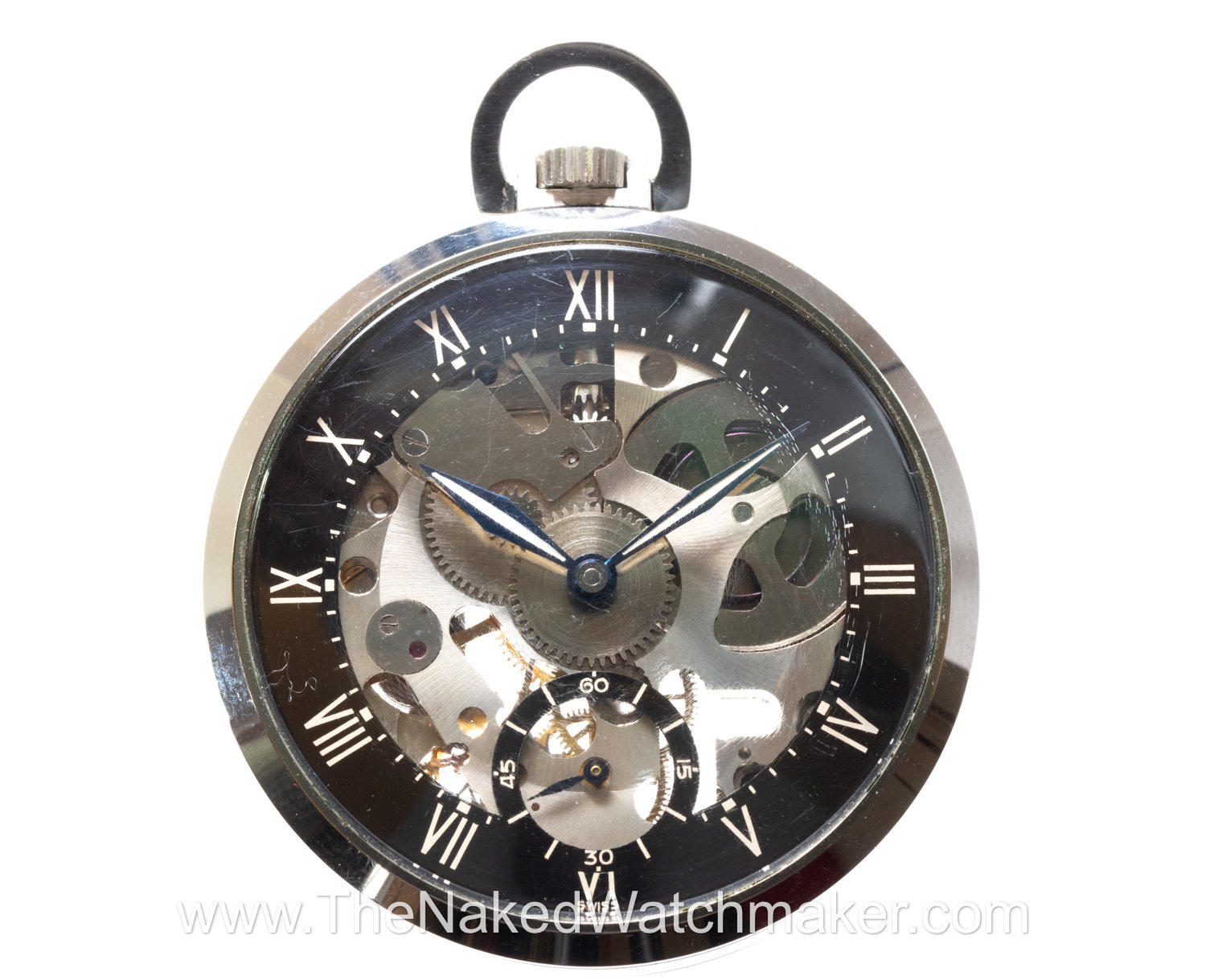The Reason
An example of one of the thirty thousand promotional pocketwatches made by Girard-Perregaux for the agents and distributors of Shell motor company in 1939.
The watch is manual wound and stem set. The case is made from brass, polished or straight grained and then chrome plated. There is a glass on the back and a perspex glass on the front which can be seen to be scratched and ‘stressed’ in places.
As a free promotional watch the cost of production was kept to a minimum and the techniques used to produce it were simple and functional.
The bezel and case back are both pushed on, there are no seals and the watch is not water-resistant.
The bezel and case back are polished and the centre of the case is grained.
Despite being produced in 1939 and well used the watch remains functional and in good condition with minimal wear. Because the case is not sealed dust and small amounts of residue have entered it.
The indication on the dial and the hands give the impression of having luminescence but this is paint. As a result the dial and hands remain in ‘fresh condition’, at this period luminous materials were radio-active and would fade over a lifetime.
The bezel removed from the case.
The case back removed from the case.
There are in total 7 jewels in the movement, 4 for the upper and lower pivot holes and end pieces, 2 for the Swiss anchor pallets and 1 for the impulse jewel.
The manufactures name engraved onto the barrel bridge and ‘SHELL’ engraved onto the ratchet wheel.
The steel work and bridges remain in clean condition and mostly undamaged and well finished.
The balance wheel cock is an unusual shape and follows the same design as the other bridges influenced by the style of an early shell oil rig lending to a ‘Deco’ style feeling.
The jewels for the balance pivots are fixed (not shock protected).
The small seconds hand is set flush with the surface of the dial and with the rhodium colour of the main-plate forming a strong contrast to see the seconds.
Cut away sections in the main-plate allow parts of the balance wheel, train and escapement to be seen.
The hands removed from the watch. The minute hand holds in place the hour wheel carrying the hour hand.
The train bridge with what appears to be 3 bushes, but in reality are not (see more detail later on this subject).
The large screw at the bottom is one of two that lock in place the movement in the case.
To remove the movement the stem is withdrawn.
The three blued steel hands.
The dial is held in place by two dial feet that slide into the main-plate and are screwed tight locking the dial solid by the laterally viewed dial screw.
The movement removed with just the case and dial shown.
The movement partially skeletonized.
From the dial side can be seen the skeletonized barrel cap revealing the mainspring.
The balance cock assembly removed.
The balance wheel with timing screws.
The balance spring is pinned manually at the collet and stud.
The Swiss anchor and its cock removed.
The train bridge removed.
The train bridge with the escape, 4th and 3rd wheels removed.
The train bridge appears to have bushes instead of jewels but the holes for the pivots are drilled directly into the brass bridge, the surface machined and plated to give the impression of bushes to reduce the number of parts required.
The ratchet wheel removed showing the square at the top of the barrel arbour.
The upper crown wheel that meshes with the winding pinion on the stem removed.
The barrel bridge removed showing the hidden barrel and the centre wheel.
The three main bridges removed and positioned together.
The dismantled main-plate with only the stem and pinions in place.
Dial side of the main-plate with the setting lever spring plate removed, showing the minute wheel and return bar.
Summary
In order to keep the price of production low, the watch was made with as few jewels as possible. In the going train what appears to be brass bushes to replace the train jewels are milled out sections of the bridge that are plated in a different colour to give the impression of bushes. This can be seen more clearly from underneath the bridge, where the bridge is flat and only the pivot holes can be seen. Despite the low cost of production the watch has been well used (shown by the condition of the case, scratches and wear) and the movement shows little sign of wear between the pivots and their brass holes. The balance wheel is of a high quality and the watch can still be regulated to be accurate to under 20seconds a day. What was once a promotional watch is today a collectable item.
Promotional material from 1939
GALLERY
In the grid below are both images used in the description of this page plus more. Please click on an image to enlarge and see in full.
To learn more about Girard-Perregaux









